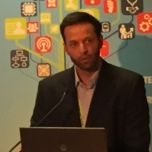Multi-Clouds and Edge Computing
A special issue of Future Internet (ISSN 1999-5903). This special issue belongs to the section "Network Virtualization and Edge/Fog Computing".
Deadline for manuscript submissions: closed (31 December 2021) | Viewed by 12334
Special Issue Editors
Interests: cloud computing; edge computing; multiclouds; cloud security; topology and orchestration management for cloud applications
Special Issues, Collections and Topics in MDPI journals
Interests: large-scale distributed systems; combinatorial optimisation; reinforcement learning; learning automata; automatic control; model-based adaptation; self-awareness; emergence
Interests: cloud computing; application-level orchestration of cloud computing services; cloud application description templates and approaches; cloud-based high performance computing; big-data processing in the cloud; cloud-based business models; orchestration in edge/fog environments; industry applications of cloud computing
Interests: strategic information systems; services customisation; fuzzy cognitive maps; business process modelling and management
Special Issues, Collections and Topics in MDPI journals
Special Issue Information
Dear Colleagues,
In the last few years, the generation of vast amounts of heterogeneous data with different velocity and veracity and the requirement to process them have significantly challenged the computational capacity and efficiency of the modern cloud infrastructural resources. The propagation of big data among different processing and storage architectures has amplified the need for adequate and cost-efficient infrastructures to host them. In parallel, an abundance of cloud service offerings are now available and are being rapidly adopted by small and medium enterprises based on their many benefits compared to traditional computing models. However, at the same time, the big data computing requirements, the bandwidth limitations, and the need to bring the processing capacity closer to the edge of the network pose new research challenges that question the adoption of single cloud provider resources.
As a consequence, modern enterprises increasingly rely on hybrid or multi-cloud solutions to meet their computational demands by dynamically acquiring additional resources from (multiple) public clouds as per their fluctuating needs. Multi-clouds as a strategic approach demands a unified abstract interface to multiple cloud platforms since it is accompanied by an increased management burden, amplified by the number of cloud providers used and the heterogeneity of resources involved.
The aim of this Special Issue is to gather the most recent innovations in cloud management platforms that support hybrid, multi-cloud, and edge deployments to cope with the ever-increasing challenges of the cloud computing continuum. We would like to invite researchers and practitioners from different disciplines and methodological backgrounds to discuss new ideas, research questions, recent results, and future challenges in this emerging area of research and public interest. Potential topics include but are not limited to the following:
- Design and implementation of multi-cloud management platforms;
- Applications and algorithms for big data and mobile edge computing multi-clouds;
- Automatic DevOps support for data-intensive applications in the cloud continuum;
- Ontologies and languages for multi-cloud application modeling;
- Advanced monitoring and event management systems in heterogeneous cloud and edge environments;
- Polymorphic applications in multi-clouds;
- Fuzzy logic approaches for the allocation, management, and configuration of cloud computing resources;
- Cloud computing service selection models;
- Optimization of distributed cloud computing (infrastructure and applications);
- Cloud and edge computing for streamed data (processing or distribution);
- Cloud and edge continuum used for real-time control;
- Forecasting algorithms and solutions for proactive adaptation;
- Function as a service (FaaS) provisioning, deployment, and management in fog computing;
- Security, privacy, and transparency for multi-clouds and edge computing;
- Data lifecycle management in heterogeneous cloud and edge environments;
- Multi-cloud resilience, robustness, load balancing, and failover handling;
- AI for scalability and QoS for multi-cloud big data applications;
- Hybrid-cloud high-performance computing (HPC) applications.
Dr. Yiannis Verginadis
Dr. Geir Horn
Prof. Dr. Tamas Kiss
Dr. Dimitrios Kardaras
Guest Editors
Manuscript Submission Information
Manuscripts should be submitted online at www.mdpi.com by registering and logging in to this website. Once you are registered, click here to go to the submission form. Manuscripts can be submitted until the deadline. All submissions that pass pre-check are peer-reviewed. Accepted papers will be published continuously in the journal (as soon as accepted) and will be listed together on the special issue website. Research articles, review articles as well as short communications are invited. For planned papers, a title and short abstract (about 100 words) can be sent to the Editorial Office for announcement on this website.
Submitted manuscripts should not have been published previously, nor be under consideration for publication elsewhere (except conference proceedings papers). All manuscripts are thoroughly refereed through a single-blind peer-review process. A guide for authors and other relevant information for submission of manuscripts is available on the Instructions for Authors page. Future Internet is an international peer-reviewed open access monthly journal published by MDPI.
Please visit the Instructions for Authors page before submitting a manuscript. The Article Processing Charge (APC) for publication in this open access journal is 1600 CHF (Swiss Francs). Submitted papers should be well formatted and use good English. Authors may use MDPI's English editing service prior to publication or during author revisions.
Benefits of Publishing in a Special Issue
- Ease of navigation: Grouping papers by topic helps scholars navigate broad scope journals more efficiently.
- Greater discoverability: Special Issues support the reach and impact of scientific research. Articles in Special Issues are more discoverable and cited more frequently.
- Expansion of research network: Special Issues facilitate connections among authors, fostering scientific collaborations.
- External promotion: Articles in Special Issues are often promoted through the journal's social media, increasing their visibility.
- Reprint: MDPI Books provides the opportunity to republish successful Special Issues in book format, both online and in print.
Further information on MDPI's Special Issue policies can be found here.








